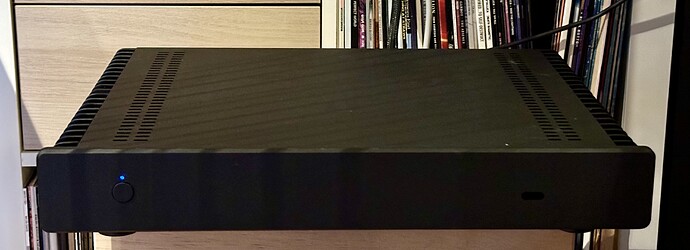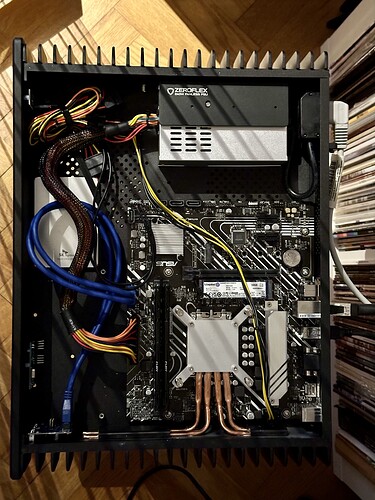I have been running Roon OS on various hardware for quite some time now, and like to tinker with various Core platfroms, and endpoints as well.
Latest server build was, as usual for me, a series of circumstances and opportunities.
I found a Streacom FC5 Alpha Evo chassi at a very reasonable cost. It was a complete HTPC, based around an old Intel Core i3 3225 and 4Gb RAM, good enough for basic Roon Core duties.
Roon OS installed on this old hardware without glitches, and i ran some basic performance tests.
While library maintenance and MUSE muscle work clearly suffers on this olden CPU it did manage my library of ca 14K albums (around 200K tracks) without complaints, when up and running.
Curiosity got the better of me though and i figured it’d be a nice exercise to build a MOCK now that Roon OS supports UEFI booting and all. After lots of comparing and pondering i figured i’d go for a later generation Intel CPU with as low a core count as possible today, and that would inevitably mean an i3.
So an Intel i3 13100 was chosen, due to high clock frequency, low core count and the other part of the equation - low thermal displacement. I have great confidence in Asus motherboards and electronics so i didn’t have any reason to stray. Their budget mobo Prime B660M-K D4 was chosen for what seemed a pretty straight forward assembly in the slim Streacom chassi.
Added 2x8Gb of standard 3.2Ghz Corsair DDR4 and figured it would be a pretty powerful Roon Core when done.
Initially i didn’t have the mounting hardware for an m.2 drive so i built it using an old SATA SSD, i think a Hynix 90Gb. As a power supply i previously laid my hands on a Streacom Zeroflex silent PSU
The results were great, even though i had some initial grudges with installing Roon OS, something failed and the Roon Server part didn’t finish succesfully. However i reinstalled from the http://rock.local web gui, and all was well. I also had to adjust some setting in BIOS Setup to allow booting of the hardware without screens and kbd attached.
Results are very good, it is very quick, and indexing and analyze of my complete library was no more than 8hours or so, retrieving the media content from an SMB share. Thats much quicker (at least the analysis part) than with a local internal media library!
The machine consumes very little power, under 20W, and runs really cool and still got great power when using MUSE for DSD upsampling. (DSD512 @ 4-5x Processing speed)
Yesterday i decided to relocate the DB and system drive to an m.2 unit, so reinstalled Roon OS after performing a backup.
Something is not fully compatible wiht the hardware though, as it failed on some account this time also.
However, after reboot, the linux based screen is telling me that Roon Server is available at a specific IP-address, but no remotes found the Core. Problem this time was that the web based GUI wasn’t available…
After a few attempts to force a repair i ended up at the terminal screen once again, with no access to the web GUI and no Core running…
On a whim i try and type
reinstall
on the terminal screen, and wadda ya know? I get a response saying something along the lines of “reinstalling Roon OS”?!? And after a minute or two, the SIGTERM command shows up and the machine reboots!
A few seconds later both the Web GUI AND the Core shows up on my remote devices! Yei!
So, a restore of the latest backup finished in a couple of minutes and within a total time span of around 30-40. inutes i have successfully relocated my system drive from an old SATA SSD to an m.2 drive, with a library of 200K files!
Very pleased!

